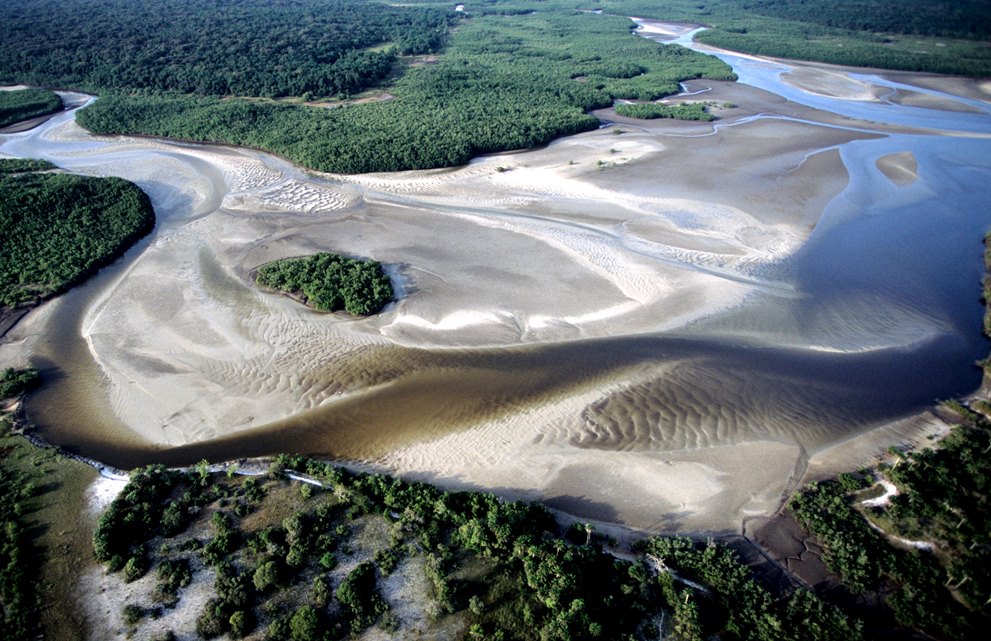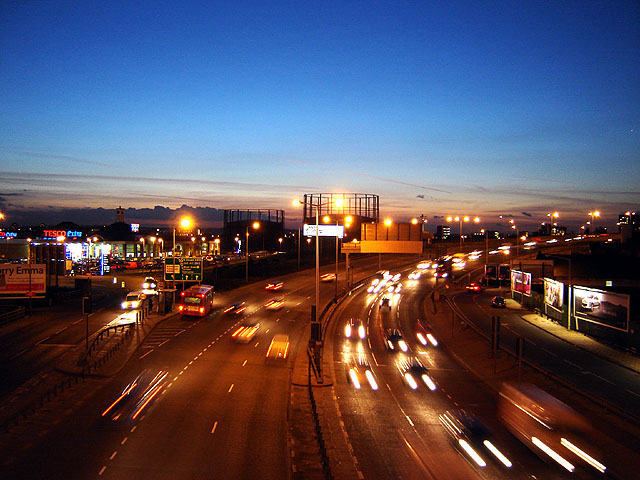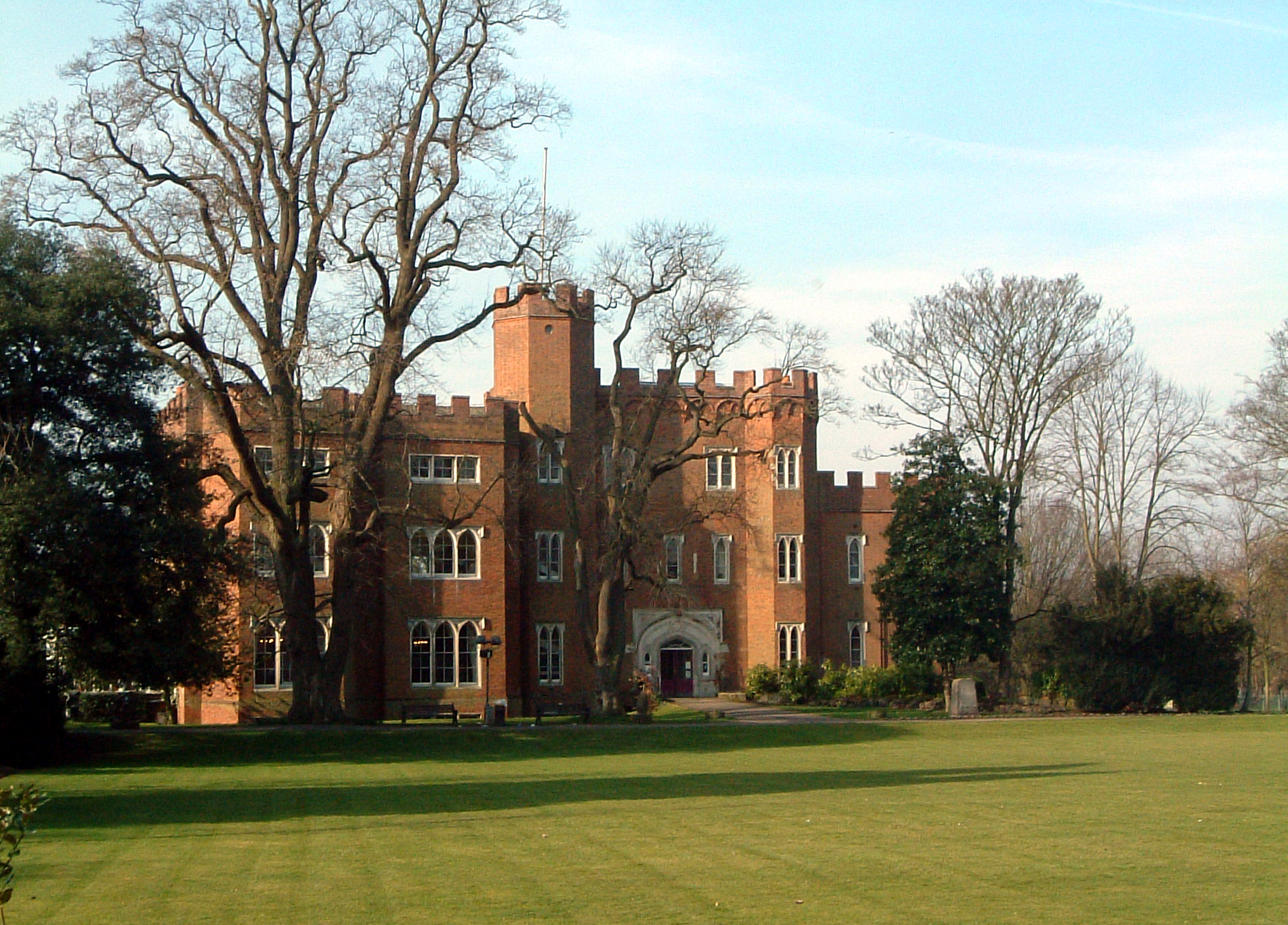|
Lea Valley
The Lea Valley (also spelt Lee Valley), the valley of the River Lea, has been used as a transport corridor, a source of sand and gravel, an industrial area, a water supply for London, and a recreational area. The London 2012 Summer Olympics were based in Stratford, London, Stratford, in the Lower Lea Valley. It is important for London's water supply, as the source of the water transported by the New River (London), New River aqueduct, but also as the location for the Lee Valley Reservoir Chain, stretching from Enfield, London, Enfield through Tottenham and Walthamstow. Geography Physical geography The catchment area of the River Lea is located in the central part of the London Basin, on that basin's northern flank. The main underlying geological formation of the upper part of the Lea catchment, north of Hoddesdon, is Cretaceous Chalk. The main underlying geological formation of the lower part of the Lea catchment, south of Hoddesdon, is Eocene London Clay. However, large a ... [...More Info...] [...Related Items...] OR: [Wikipedia] [Google] [Baidu] |
Ramsar Convention
The Ramsar Convention on Wetlands of International Importance Especially as Waterfowl Habitat is an international treaty for the conservation and sustainable use of Ramsar site, Ramsar sites (wetlands). It is also known as the Convention on Wetlands. It is named after the city of Ramsar, Mazandaran, Ramsar in Iran, where the convention was signed in 1971. Every three years, representatives of the contracting parties meet as the Ramsar Convention#Conference of the Contracting Parties, Conference of the Contracting Parties (COP), the policy-making organ of the wetland conservation, convention which adopts decisions (site designations, resolutions and recommendations) to administer the work of the convention and improve the way in which the parties are able to implement its objectives. In 2022, COP15 was held in Montreal, Canada. List of wetlands of international importance The list of wetlands of international importance included 2,531 Ramsar site, Ramsar sites in Februa ... [...More Info...] [...Related Items...] OR: [Wikipedia] [Google] [Baidu] |
London Clay
The London Clay Formation is a Sediment#Shores and shallow seas, marine formation (geology), geological formation of Ypresian (early Eocene Epoch, c. 54-50 million years ago) age which outcrop, crops out in the southeast of England. The London Clay is well known for its fossil content. The fossils from the lower Eocene rocks indicate a moderately warm climate, the tropical or subtropical flora. Though sea levels changed during the deposition of the clay, the habitat was generally a lush forest – perhaps like in Indonesia or East Africa today – bordering a warm, shallow ocean. The London Clay is a stiff bluish clay which becomes brown when weathered and oxidized. Nodular lumps of pyrite are frequently found in the clay layers. Pyrite was produced by microbial activity (sulfate reducing bacteria) during clay sedimentation. Once clay is exposed to atmospheric oxygen, framboidal pyrite with a great specific surface is rapidly oxidized. Acid mine drainage, Pyrite oxidation produce ... [...More Info...] [...Related Items...] OR: [Wikipedia] [Google] [Baidu] |
Epping, Essex
Epping is a market town and civil parish in the Epping Forest District of Essex, England. Part of the London metropolitan area, metropolitan and Urban area, urban area of London, it is 17 miles (27 km) northeast of Charing Cross. It is surrounded by the northern end of Epping Forest, and on a ridge of land between the River Roding and River Lea valleys. Epping is the terminus for London Underground's Central line (London Underground), Central line. The town has a number of historic Grade I and II* and Grade II listed buildings. The weekly market, which dates to 1253, is held each Monday. In 2001 the parish had a population of 11,047 which increased to 11,461 at the 2011 Census. Epping became Twin towns and sister cities, twinned with the German town of Eppingen in north-west Baden-Württemberg in 1981. History "Epinga", a small community of a few scattered farms and a chapel on the edge of the forest, is mentioned in the ''Domesday Book'' of 1086. However, the settlement refe ... [...More Info...] [...Related Items...] OR: [Wikipedia] [Google] [Baidu] |
Southgate, London
Southgate is a suburban area of north London, England, in the London Borough of Enfield, north of Charing Cross. History Southgate was originally the south gate of Enfield Chase, the King's hunting grounds. This is reflected in the street names Chase Road (which leads due north from the station to Oakwood, London, Oakwood, and was formerly the avenue into the Chase) and Chase Side. There is a blue plaque on a building on the site of the south gate. A little further to the south was another small medieval settlement called South Street which had grown up around a village green; by 1829 the two settlements had merged and the village green became today's Southgate Green. Southgate was predominantly developed in the 1930s: largish semi-detached houses were built on the hilly former estates (Walker, Osidge, Monkfrith, etc.) following increased transport development. In 1933, the A406 road, North Circular Road was completed through Edmonton and Southgate, and also in 1933, the L ... [...More Info...] [...Related Items...] OR: [Wikipedia] [Google] [Baidu] |
Northaw
Northaw is a village in the Welwyn Hatfield district of Hertfordshire, England. It is part of the civil parish of Northaw and Cuffley (where at the 2011 Census the population was included), which was originally known as Northaw. The parish had a population of 5,190 according to the 2001 census, most of whom live in Cuffley. It formed part of the Metropolitan Police District until 2000. The village has a population of around 590 people. Northaw Church of England Primary School was founded in 1879 and the trust deed, which is the school's Christian foundation, remains integral to the ethos and beliefs of the school community. The school is a Voluntary Aided School and is part of the family of the Diocese of St Albans. The parish church of Thomas à Becket is Grade II listed. It was built in 1881, by C. Kirk and Son of Sleaford, replacing a church of 1809. The north aisle was added in 1887, with choir and vestry added in 1893. The church has complete and original stained glas ... [...More Info...] [...Related Items...] OR: [Wikipedia] [Google] [Baidu] |
Edmonton, London
Edmonton is a town in north London, England within the London Borough of Enfield, a Districts of England, local government district of Greater London. The northern part of the town is known as Lower Edmonton or Edmonton Green, and the southern part as Upper Edmonton. Situated north-northeast of Charing Cross, it borders Enfield, London, Enfield to the north, Chingford to the east, and Tottenham to the south, with Palmers Green and Winchmore Hill to the west. The population of Edmonton was 82,472 as of 2011. The town forms part of the Ceremonial counties of England, ceremonial county of Greater London and until 1965 was in the Ancient counties of England, ancient county of Middlesex. Historically a Civil parish, parish in the Edmonton Hundred of Middlesex, Municipal Borough of Edmonton, Edmonton became an Urban district (Great Britain and Ireland), urban district in 1894, and a municipal borough in 1937. Local government took place at the now-demolished Edmonton Town Hall in For ... [...More Info...] [...Related Items...] OR: [Wikipedia] [Google] [Baidu] |
Hertford
Hertford ( ) is the county town of Hertfordshire, England, and is also a civil parish in the East Hertfordshire district of the county. The parish had a population of 26,783 at the 2011 census. The town grew around a Ford (crossing), ford on the River Lea, near its confluences with the rivers River Mimram, Mimram, River Beane, Beane, and River Rib, Rib. The Lea is navigable from the River Thames, Thames up to Hertford. Fortified settlements were established on each side of the ford at Hertford in 913AD. The county of Hertfordshire was established at a similar time, being named after and administered from Hertford. Hertford Castle was built shortly after the Norman Conquest in 1066 and remained a royal residence until the early seventeenth century. Hertfordshire County Council and East Hertfordshire District Council both have their main offices in the town and are major local employers, as is McMullen's Brewery, which has been based in the town since 1827. The town is also pop ... [...More Info...] [...Related Items...] OR: [Wikipedia] [Google] [Baidu] |
Lea Valley Topographic Map
Lea or LEA may refer to: Places Australia * Lea River, Tasmania, Australia * Lake Lea, Tasmania, from which the Lea River flows * RAAF Base Learmonth, IATA airport code "LEA" England * Lea, Cheshire, a civil parish * Lea, Derbyshire, a settlement in the civil parish of Dethick, Lea and Holloway * Lea, Devon, a location * Lea, Herefordshire, a village and civil parish * Lea, Lancashire, a village * Lea, Lincolnshire, a small village and civil parish * Lea, Lydham, a location in Shropshire * Lea, Pontesbury, a location in Shropshire * Lea, Wiltshire, a village * River Lea, a tributary of the Thames ** Lea Bridge, Greater London, the area around the bridge over the River Lea Elsewhere * Lea, a river in Biscay, Basque Country, Spain * Lea County, New Mexico, United States People and fictional characters * Lea (given name), a list of people and fictional characters * Lea (surname), a list of people * Helena Nordheim (1903–1943), Dutch Olympic champion gymnast nicknam ... [...More Info...] [...Related Items...] OR: [Wikipedia] [Google] [Baidu] |
Essex
Essex ( ) is a Ceremonial counties of England, ceremonial county in the East of England, and one of the home counties. It is bordered by Cambridgeshire and Suffolk to the north, the North Sea to the east, Kent across the Thames Estuary to the south, Greater London to the south-west, and Hertfordshire to the west. The largest settlement is Southend-on-Sea, and the county town is Chelmsford. The county has an area of and a population of 1,832,751. After Southend-on-Sea (182,305), the largest settlements are Colchester (130,245), Basildon (115,955) and Chelmsford (110,625). The south of the county is very densely populated, and the remainder, besides Colchester and Chelmsford, is largely rural. For local government purposes Essex comprises a non-metropolitan county, with twelve districts, and two unitary authority areas: Thurrock Council, Thurrock and Southend-on-Sea City Council, Southend-on-Sea. The districts of Chelmsford, Colchester and Southend have city status. The county H ... [...More Info...] [...Related Items...] OR: [Wikipedia] [Google] [Baidu] |
Middlesex
Middlesex (; abbreviation: Middx) is a Historic counties of England, former county in South East England, now mainly within Greater London. Its boundaries largely followed three rivers: the River Thames, Thames in the south, the River Lea, Lea to the east and the River Colne, Hertfordshire, Colne to the west. A line of hills formed its northern boundary with Hertfordshire. The county was the List of counties of England by area in 1831, second smallest of the historic counties of England, after Rutland. The name of the county derives from its origin as a homeland for the Middle Saxons in the early Middle Ages, with the county subsequently part of that territory in the ninth or tenth century. The City of London, formerly part of the county, became a self governing county corporate in the twelfth century; the City was still able to exert influence as the sheriffs of London maintained their jurisdiction in Middlesex, though the county otherwise remained separate. To the east of t ... [...More Info...] [...Related Items...] OR: [Wikipedia] [Google] [Baidu] |
Hertfordshire
Hertfordshire ( or ; often abbreviated Herts) is a ceremonial county in the East of England and one of the home counties. It borders Bedfordshire to the north-west, Cambridgeshire to the north-east, Essex to the east, Greater London to the south and Buckinghamshire to the west. The largest settlement is Watford, and the county town is Hertford. The county has an area of and had a population of 1,198,800 at the 2021 census. After Watford (131,325), the largest settlements are Hemel Hempstead (95,985), Stevenage (94,470) and the city of St Albans (75,540). For local government purposes Hertfordshire is a non-metropolitan county with ten districts beneath Hertfordshire County Council. Elevations are higher in the north and west, reaching more than in the Chilterns near Tring. The county centres on the headwaters and upper valleys of the rivers Lea and the Colne; both flow south and each is accompanied by a canal. Hertfordshire's undeveloped land is mainly agricultural ... [...More Info...] [...Related Items...] OR: [Wikipedia] [Google] [Baidu] |
Alluvium
Alluvium (, ) is loose clay, silt, sand, or gravel that has been deposited by running water in a stream bed, on a floodplain, in an alluvial fan or beach, or in similar settings. Alluvium is also sometimes called alluvial deposit. Alluvium is typically geologically young and is not Consolidation (geology), consolidated into solid rock. Sediments deposited underwater, in seas, estuaries, lakes, or ponds, are not described as alluvium. Floodplain alluvium can be highly fertile, and supported some of the earliest human civilizations. Definitions The present Scientific consensus, consensus is that "alluvium" refers to loose sediments of all types deposited by running water in floodplains or in alluvial fans or related landforms. However, the meaning of the term has varied considerably since it was first defined in the French dictionary of Antoine Furetière, posthumously published in 1690. Drawing upon concepts from Roman law, Furetière defined ''alluvion'' (the French term for al ... [...More Info...] [...Related Items...] OR: [Wikipedia] [Google] [Baidu] |








